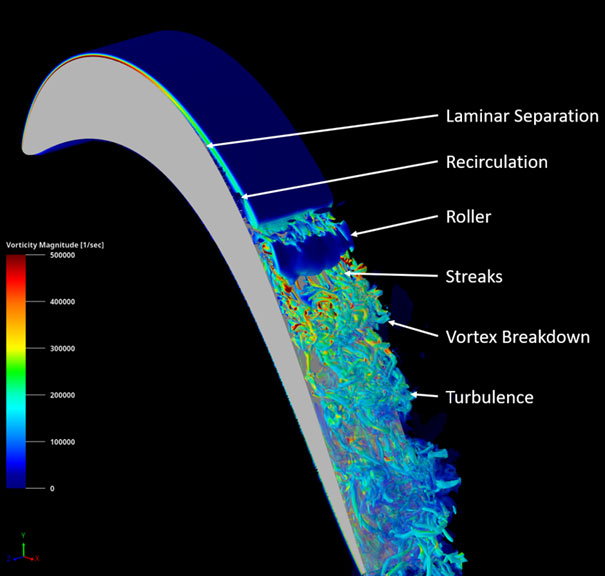Techsburg selected for a USAF Phase II SBIR contract entitled "Advancement of GPU-Accelerated Lattice-Boltzmann Method Simulations for Low Pressure Turbine Applications"

ABSTRACT: The aerodynamics of the Low-Pressure (LP) Turbines of High-Altitude Unmanned Air Systems (UAS) are dictated by the behavior of the transition bubble located on the suction surface of the turbine airfoils. Unfortunately, this phenomenon is difficult to predict with the Reynolds-Averaged Navier-Stokes (RANS) computational fluid dynamics (CFD) tools typically used in the design of LP Turbines. Scale-resolving simulations (SRS), such as Large Eddy Simulation-LES and Direct Numerical Simulation-DNS, offer a potential solution to this problem but the computational requirements of DNS are impractically high for use in the design cycle and even LES only becomes feasible when compromises are made to the grid topology that adversely affect the accuracy of the predictions. A potential solution is Graphical Processing Unit (GPU) based computing. GPUs offer improved computing capacity and memory bandwidth combined with smaller physical size and less electrical power draw than CPUs making them ideal for multi-node processing. While this option represents an evolutionary step in the design of LP turbines, Techburg is proposing to revolutionize the processes by combining GPU processing with the Scale-Resolving, Lattice-Boltzmann Method solver, PowerFLOW. In addition to the computational benefits of GPUs, PowerFLOW has been proven to be more than 50 times more computationally efficient than traditional Navier-Stokes LES, eliminating the need to make compromises in mesh topology. This combined solution yields a path toward to the ‘best of both worlds’ for SRS simulations; the physical accuracy of DNS coupled with the computational efficiency of LES. Early PowerFLOW simulations of LP turbine airfoil cascades by Techsburg have already proven this promise by accurately predicting both the total pressure losses and the behavior of the transition bubble, with simulations which require only hours on a single GPU.
